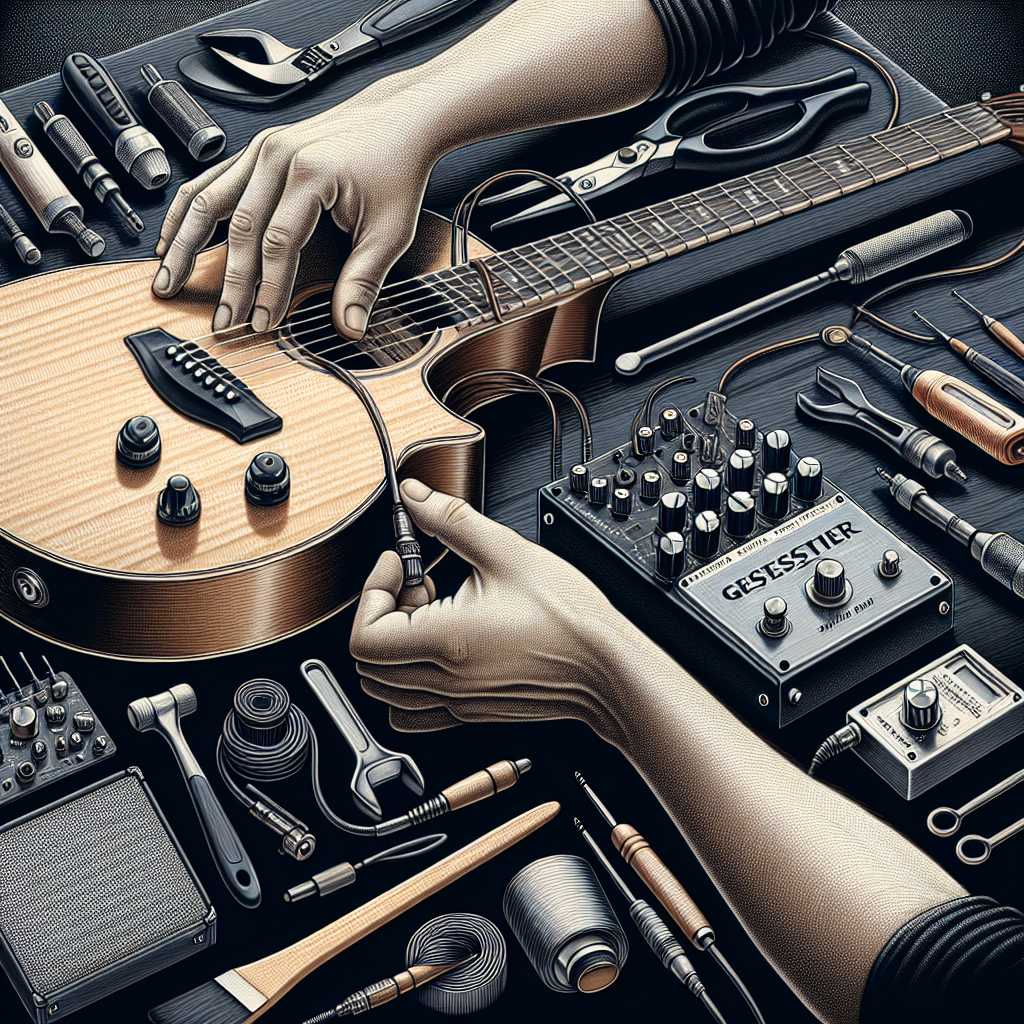
Top 10 Steps on How to Install a Preamp in an Acoustic-Electric Guitar
Installing a preamp in an acoustic-electric guitar can dramatically improve your instrument’s sound quality, offering clearer tones and better amplification. This task may seem daunting, but with the correct guidance and tools, you can do it like a pro. In this article, we’ll walk you through the essential steps to install a preamp in an acoustic-electric guitar, enhancing your musical experience.
1. Gather the Necessary Tools and Materials
Before you start, ensure you have all the necessary tools and materials. This preparation will save you time and prevent frustration during the process. You will need:
- A preamp kit suitable for your guitar model
- Screwdrivers
- A drill with assorted bits
- Wire cutters and strippers
- Soldering iron and solder
- Double-sided tape or adhesive
- Protective gloves and eyewear
Having all these tools ready will make the process smoother and help you install the preamp efficiently.
2. Read the Preamp Installation Manual
Before jumping into the installation, read through the manual provided with your preamp kit. The guide is customized for your specific model and will cover important details like wire connections and placement. Note any specific tools you might need and the sequence of steps to follow. Following the manual ensures you avoid errors that might affect your guitar’s performance.
3. Remove Guitar Strings
To access the internal components of your guitar, you need to remove the strings safely. This precaution not only allows you to work freely but also helps protect the guitar’s finish from scratches.
4. Locate and Drill Holes for the Preamp
Next, decide where you want the preamp panel to be installed on the guitar. Common placements are on the side or above the soundhole. Once you determine the location, carefully mark where the holes need to be drilled. Use a drill to make precise holes for the preamp’s screws and potentiometers. Ensure adequate space inside the guitar for both the preamp and wiring.
5. Install the Preamp Panel
Place the preamp panel in the area you’ve prepared and securely fasten it with screws. Use a screwdriver to fix the panel without overtightening, which could damage the wood or strip the screws. Some kits come with templates to make this step easier and safeguard against alignment errors.
6. Install the Pickup
Most preamp kits come with a pickup that needs to be installed inside the guitar body. This pickup converts the vibrations into an electrical signal for the preamp. You typically place it beneath the bridge saddle or affix it with adhesives inside the soundhole, depending on the model specifications. Use your manual to ensure correct placement.
7. Connect the Wires
Use the diagram in your manual to connect the pickup to the preamp with the provided cables. If needed, use wire strippers to expose the wire ends for a snug fit. For some preamps, soldering might be required at certain connection points. Be careful during this process to prevent damaging the wires or over-soldering, which could affect signal clarity.
8. Secure the Internal Components
Once all connections are made, use double-sided tape or adhesive to secure the internal components, such as excess wires and the battery holder. This ensures they don’t rattle during play, which can affect sound quality.
9. Test the Preamp Functionality
With the preamp installed, replace the guitar strings and tune them. Plugin the guitar to an amplifier to test the setup. Check all the controls on the preamp, making sure they function correctly, and tweak any wires if needed.
10. Final Adjustments and Finishing Touches
Once you’re satisfied with the installation and sound quality, make any final adjustments necessary to enhance the sound output further. Ensure everything is tightly secured and the guitar body has no new nicks or scratches from the installation process. Congratulations, your acoustic-electric guitar is ready with a new preamp for better-defined acoustics!
FAQs
Can I install a preamp in any acoustic guitar?
Most acoustic guitars can be fitted with a preamp, but it’s crucial to ensure compatibility with the guitar’s make and model. Check the specifications on both the guitar and preamp kit.
Do I need to solder when installing a preamp?
Some preamp kits require soldering to connect wires securely, while others use simple plug-and-play connectors. Always refer to your preamp installation manual for precise instructions.
What are the benefits of installing a preamp?
Installing a preamp enhances sound amplification and control, enabling you to adjust bass, treble, and volume to suit different playing settings, from studio recording to live performances.
Can I remove the preamp from my guitar?
Yes, preamps can typically be removed, but it requires you to reverse the installation process. Be cautious to avoid damaging the guitar’s body or components during removal.
Does installing a preamp affect the guitar’s acoustic sound?
While installing a preamp might slightly alter the acoustic properties due to added components, it generally enhances the guitar’s amplified sound without significant loss of its natural tone.
How can I keep my preamp in good condition?
Regularly check the battery of the preamp to ensure it is in working order, keep the controls clean, and avoid exposing the guitar to extreme temperatures or humid conditions, which could affect the preamp components.
In conclusion, equipping your acoustic-electric guitar with a preamp can substantially improve its sound potential, offering you a broader range of tonal control. Following these steps will ensure a correct installation without compromising your guitar’s integrity. Happy playing, and enjoy the enriched sound experience!
For a more in-depth guide on guitar modifications, refer to StewMac’s online resources.